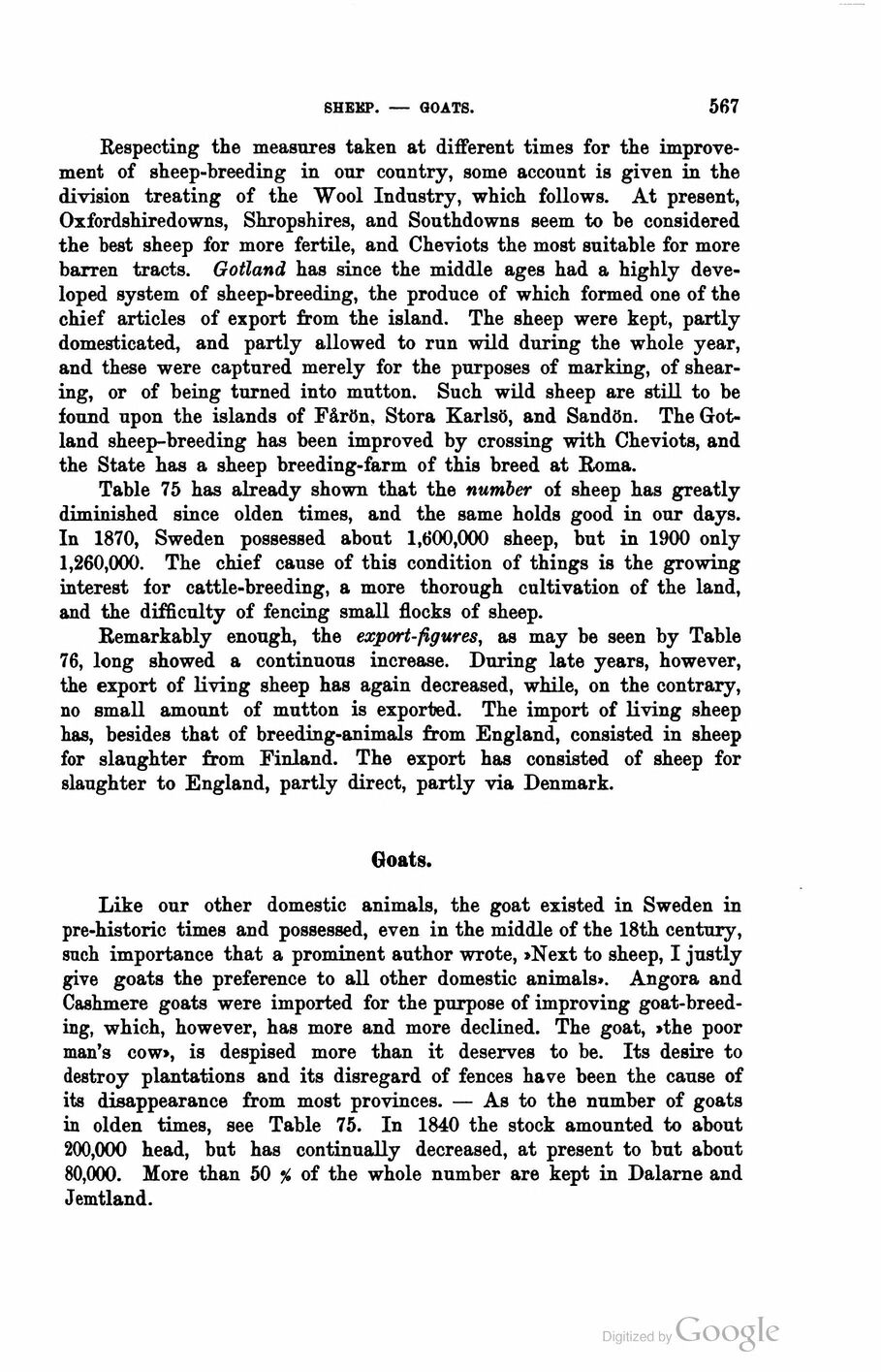
Full resolution (JPEG) - On this page / på denna sida - Second part - VI. Agriculture and Cattle-Breeding - 2. Cattle-Rearing. By Captain V. Nauckhoff, Stockholm - Sheep - Goats

<< prev. page << föreg. sida << >> nästa sida >> next page >>
Below is the raw OCR text
from the above scanned image.
Do you see an error? Proofread the page now!
Här nedan syns maskintolkade texten från faksimilbilden ovan.
Ser du något fel? Korrekturläs sidan nu!
This page has never been proofread. / Denna sida har aldrig korrekturlästs.
SHEEP. — GOATS.
567
Respecting the measures taken at different times for the
improvement of sheep-breeding in our country, some account is given in the
division treating of the "Wool Industry, which follows. At present,
Oxfordshiredowns, Shropshires, and Southdowns seem to be considered
the best sheep for more fertile, and Cheviots the most suitable for more
barren tracts. Gotland has since the middle ages had a highly
developed system of sheep-breeding, the produce of which formed one of the
chief articles of export from the island. The sheep were kept, partly
domesticated, and partly allowed to run wild during the whole year,
and these were captured merely for the purposes of marking, of
shearing, or of being turned into mutton. Such wild sheep are still to be
found upon the islands of Fårön, Stora Karlsö, and Sandön. The
Gotland sheep-breeding has been improved by crossing with Cheviots, and
the State has a sheep breeding-farm of this breed at Roma.
Table 75 has already shown that the number of sheep has greatly
diminished since olden times, and the same holds good in our days.
In 1870, Sweden possessed about 1,600,000 sheep, but in 1900 only
1,260,000. The chief cause of this condition of things is the growing
interest for cattle-breeding, a more thorough cultivation of the land,
and the difficulty of fencing small flocks of sheep.
Remarkably enough, the export-figures, as may be seen by Table
76, long showed a continuous increase. During låte years, however,
the export of living sheep has again decreased, while, on the contrary,
no small amount of mutton is exported. The import of living sheep
has, besides that of breeding-animals from England, consisted in sheep
for slaughter from Finland. The export has consisted of sheep for
slaughter to England, partly direct, partly via Denmark.
Goats.
Like our other domestic animals, the goat existed in Sweden in
pre-historic times and possessed, even in the middle of the 18th century,
such importance that a prominent author wrote, »Next to sheep, I justly
give goats the preference to all other domestic animals». Angora and
Cashmere goats were imported for the purpose of improving
goat-breeding, which, however, has more and more declined. The goat, »the poor
man’s cow», is despised more than it deserves to be. Its desire to
destroy plantations and its disregard of fences have been the cause of
its disappearance from most provinces. — As to the number of goats
in olden times, see Table 75. In 1840 the stock amounted to about
200,000 head, but has continually decreased, at present to but about
80,000. More than 50 % of the whole number are kept in Dalarne and
Jemtland.
<< prev. page << föreg. sida << >> nästa sida >> next page >>